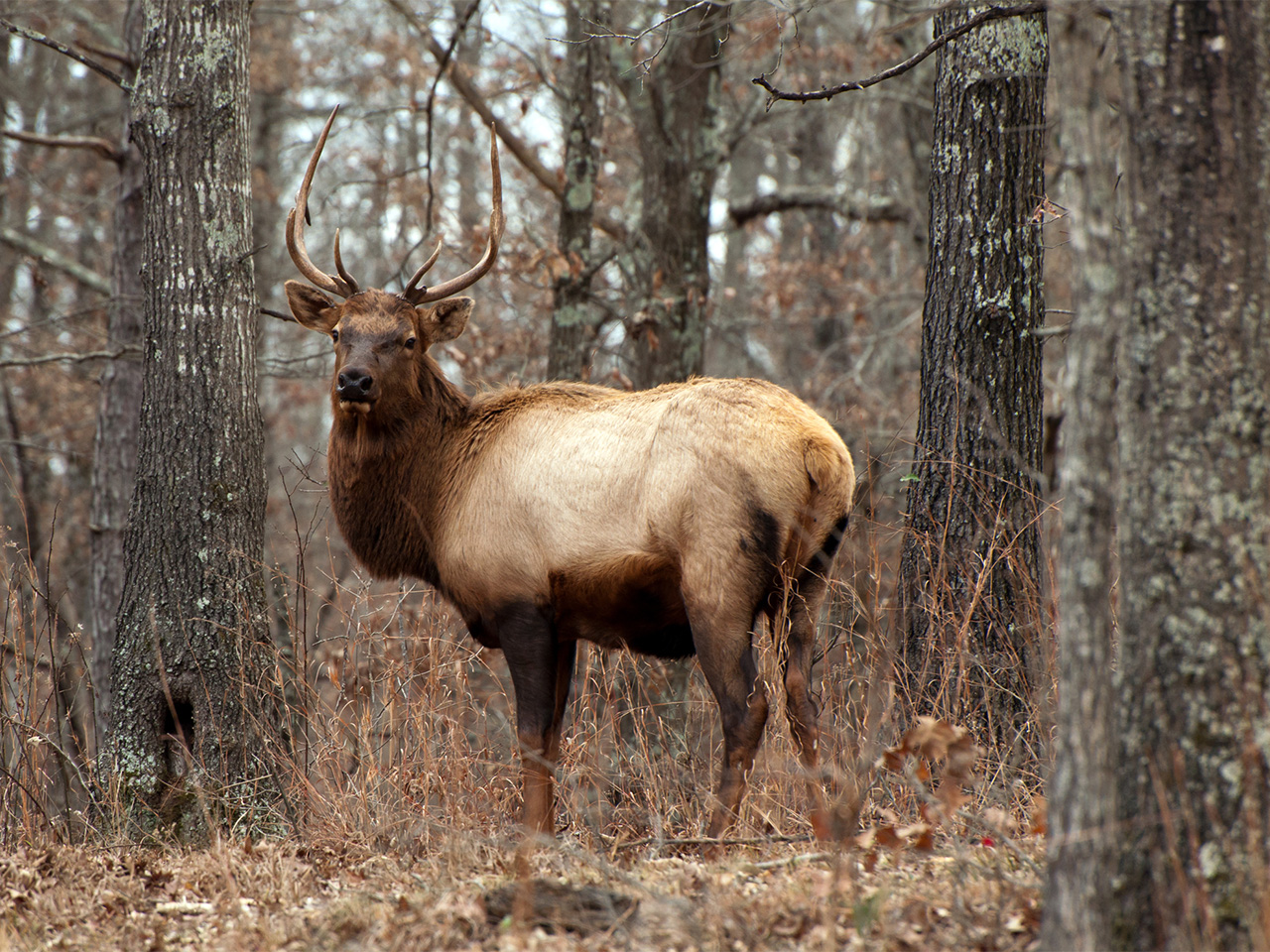Eastern Kentucky Elk Tours and Viewing Locations
During the days of Daniel Boone, elk were a common sight in Kentucky. By 1847, however, they were gone, and for more than 150 years, Kentucky autumns were no longer heralded by the bugling of the elk. That all changed in 1997, when more than 1,500 elk were reintroduced to 16 counties in Kentucky. This massive project, which involved nonstop cross-country transport with drivers trading off every eight hours, required the cooperation of the Kentucky Department of Fish and Wildlife, the University of Kentucky College of Agriculture, the Rocky Mountain Elk Foundation, and Fish and Wildlife units in Arizona, Kansas, North Dakota, New Mexico, Oregon, and Utah.

The elk, which live in herds and like to graze on open land during the day and sleep in the protection of the forest at night, were introduced onto grasslands created through surface mine reclamation projects. The elk are entirely wild, not bounded by fences, and free to move throughout the region as they wish. Although no one knew exactly how the elk would fare in Kentucky, they have thrived remarkably. Thanks to an absence of predators and an abundance of food, the elk population has grown to an estimated size of 10,000, making it the largest population east of the Rocky Mountains. In fact, in order to manage the population, the state now runs a tightly controlled elk-hunting program, with permits given out by lottery.
Because the elk are free-roaming, you could conceivably see them anywhere in Eastern Kentucky. There are, however, areas that are prime elk-viewing spots. Elk can be viewed year-round, although spring and fall are the best seasons and dawn and dusk are the best times. To do your own self-guided elk-viewing tour, set your sights on the following areas:
- South Fork Elk View: The largest elk herd in Kentucky resides in Breathitt County, and a viewing area has been established for visitors. From Jackson, which is located on KY 15 between Hazard and the Mountain Parkway, drive south on KY 15 for 3 miles, and then turn left on KY 1098. Drive 16 miles, and then turn right on a paved road identified as South Fork Elk View.
- Jewel Ridge Viewing Area: Located in southern Perry County, the Jewel Ridge Viewing Area is easily accessible from Hazard. Travel south on KY 15 to KY 7. Drive 11 miles on KY 7, and then turn right onto KY 699. After 7.6 miles, turn left onto KY 463. In five miles, you’ll reach the viewing station on the left.
- Elk View Drive: A very popular elk-viewing spot, Elk View Drive is located in Knott County, north of Hindman. The viewing area is off of KY 1028, a few miles north of where KY 1028 intersects with KY 80.
- Begley Wildlife Management Area: A seasonal hunting area located near Harlan, Begley has meadows and forests that attract elk. To reach Begley from Harlan, take northbound U.S. 421 to westbound KY 221, and then turn right on Big Run Road after 8.9 miles to enter the wildlife management area.
A really great way to see the elk is to go on a tour organized through the state parks. On these tours, you have the benefit of being accompanied by a knowledgeable naturalist, who can provide you with all kinds of information on the elk, as well as any other wildlife you might spot. Tours are offered from the following parks:
Buckhorn Lake State Resort Park
For a truly unique way of viewing elk, contact Saddle Up Elk Tours (250 Hale Cemetery Rd., Mallie, 606/642-3656), which offers horseback guided tours of elk areas.
Excerpted from the Second Edition of Moon Kentucky.
From the Pacific to the Atlantic, through prairies and bayous to snow-capped mountains, uncover the best of the US with Moon USA State by State.
Newsletter Signup
By clicking ‘Sign Up,’ I acknowledge that I have read and agree to Hachette Book Group’s Privacy Policy and Terms of Use
Pin it for Later


